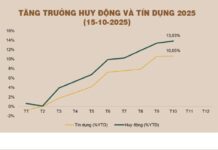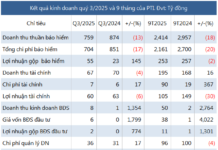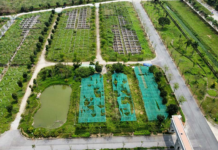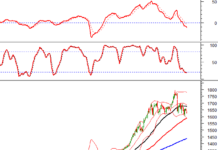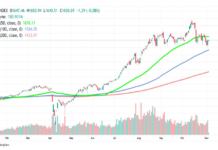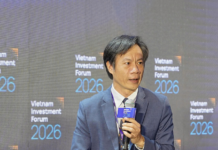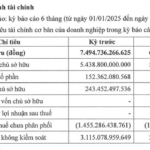The Ministry of Defense has requested that the Ministry of Industry and Trade review, supplement, and clarify the specific reasons for the accumulated loss of 44,792 billion VND. Based on this, they should identify the loss items directly related to the cost of electricity production and supply and report to the Government for consideration and decision-making.

Various ministries proposed that the Ministry of Industry and Trade clarify the loss of 44,792 billion VND included in the electricity price. (Illustrative image: EVN)
Similarly, the Ministry of Finance also suggested that the Ministry of Industry and Trade should review the proposal to ensure compliance and consistency with the pricing principles of the Law on Electricity; and research and propose appropriate price adjustment mechanisms.
Especially, the Ministry of Industry and Trade should direct EVN to report in detail on the items of losses, distinguishing between losses due to social welfare and those arising from business operations, paying attention to losses due to investment in non-core businesses, if any.
“Clarify the losses, if any, arising from the implementation of electricity pricing policies to support the Government’s policies on the development of sectors and fields. Assess the impact of electricity price adjustments on the lives of people, businesses, and the economy. Along with this, it is necessary to propose solutions to limit the impact of electricity price adjustments,” said the Ministry of Finance.
The Ministry of Finance emphasized that the Ministry of Industry and Trade, as the industry manager, is fully responsible for reviewing and inspecting the contents of EVN’s reports, monitoring EVN’s adjustments to the average retail electricity price, and inspecting the responsibilities of the ministries and branches.
Meanwhile, the Vietnam Chamber of Commerce and Industry (VCCI) also requested clarification on whether the permission to allocate uncalculated and unrecovered cost items is applicable only for 2022 or will take effect for subsequent cases as well.
VCCI also raised a series of questions, requesting clarification on how the total cost of these items will be determined and by whom. While EVN proposes the allocation of these costs, it is unclear whether this proposal is for each year or there is a general allocation plan with a roadmap. In case these costs are fully allocated and then removed from the electricity price formula, will the electricity price be reduced?
Agreeing with the proposal of the Ministry of Industry and Trade, the Vietnam Electricity Association (VEEA) stated that the draft decree does not clearly and explicitly define the responsibility for the final decision after EVN proposes the allocation.
The draft also does not specify the costs arising from factors beyond the control of EVN and power companies, as the decree only allows adjustments according to objective conditions and factors.
For the case of the end of the occurrence of factors, how the average retail electricity price will be adjusted is also not specified. Among them, factors beyond the control of EVN and power companies only occur in a few years.
The Consumer Protection Association suggested that the cost from 2022 onwards, which will be added to the selling price to electricity users from 2025 onwards, needs to be studied to ensure compliance with the principle of Decree 72, which is currently in effect, that EVN publicly announces the cost, as well as the impact on consumers and businesses that use electricity.
Recently, the Ministry of Industry and Trade issued the third draft amendment to Decree 72/2025 on the mechanism and time frame for adjusting the average retail electricity price and sent it to the Ministry of Justice for appraisal. The expected time for the issuance of the amended decree is in September.
In this draft, the Ministry of Industry and Trade proposed to add a regulation allowing EVN to include other costs that have not been fully accounted for in the past in the average retail electricity price. This provides a legal basis for EVN to recover losses from previous years through adjustments to the average retail electricity price in subsequent years.
The data shows that EVN had an accumulated loss of about 50,029 billion VND in 2022-2023, and by the end of 2024, the loss was 44,792 billion VND.
In the draft, the Ministry of Industry and Trade proposed two specific options for these cost items.
Option 1: Allow EVN to allocate costs directly related to electricity production and supply that have not been covered in the average retail electricity price, based on audited financial statements from 2022 onwards, after deducting profits from other business activities (if any). This option can also be applied in subsequent years if similar situations arise.
According to the Ministry of Industry and Trade, this option creates proactiveness in management but may reduce the motivation for power companies to save and control costs since they will be compensated through the average retail electricity price.
Option 2: EVN only handles costs that have not been covered from 2022 until before this decree takes effect, and it will not apply to subsequent years.
The Ministry suggested that this option would require power companies to closely monitor and manage their production and business activities, minimizing the occurrence of similar situations in the future.
In addition, the draft also proposed to include unrealized foreign exchange differences in the valuation and unrealized foreign exchange differences in the calculation of electricity prices for power plants.
The Perils of Purchasing an Unfurnished Apartment: Why Homeowners Are Crying Over Soaring Costs.
“The allure of a blank canvas: For those in the market for a new home, the appeal of a barebones apartment is undeniable. With a lower price tag than a fully finished apartment, it presents an opportunity to design and create a space that truly reflects one’s taste and lifestyle. The promise of cost savings and a unique living environment is a tempting proposition for many.”






